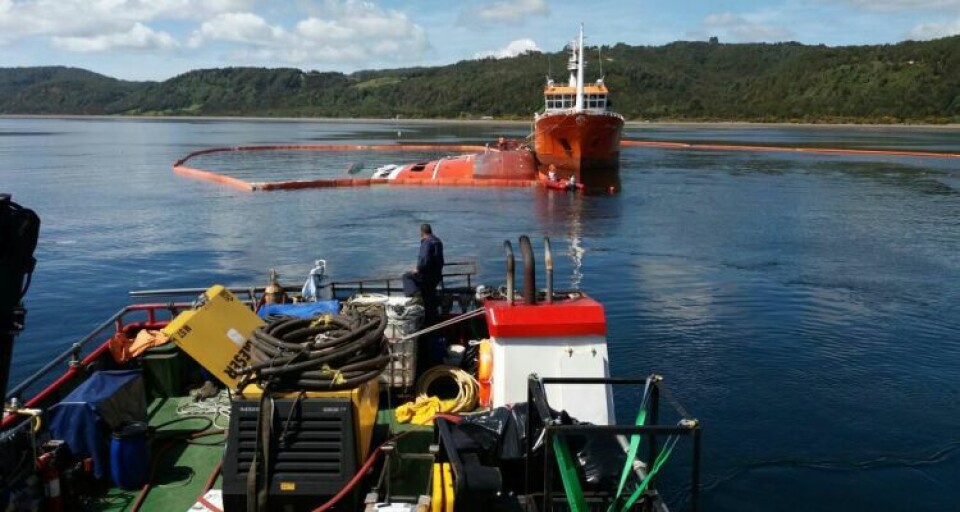
Work to raise wellboat due to start today
An attempt to re-float the wellboat Seikongen, which sank in shallow water off the coast of Chile last October, is due to finally start today after previous attempts were prevented by bad weather.
The re-floating process will last seven days. After that, Navy personnel will inspect the ship’s compartments as part of the administrative summary investigation carried out by the authority.
The Hong Kong-built Seikongen is lying on its side, partly out of the water. Manoeuvres to ready the ship for righting were scheduled to begin at 8am local time (1pm BST).
Castro area maritime governor, Héctor Aravena, said the work involved tensioning of chains attached to the vessel and everything else necessary to begin the righting process.
High tide
“The righting is considered to start between 11 and 12 on Thursday,” said Aravena. “This is because at that time the height of the tides is adequate to perform this work, that is, the high tide. We estimate that if everything goes as planned, this work should last between three to four hours to achieve the full righting of the ship.”
He added that the operation was dependent on favourable weather conditions.
Aravena said the manoeuvre is a delicate one that will be monitored minute by minute, link by link. “We will have a contingent of Navy personnel, more specialists from Valparaiso that have come to reinforce the work, in all the fronts of action. In addition, along with the company responsible for the boat, we have analysed all the variables and possible problems that may arise and how to solve them at the time, ie have preconceived actions in the case of some complexity,” said Aravena.
Slow work
Once the righting has been completed, the re-floating will take place. “This should be the next day. This is a slow work, because you have to extract the water from the compartments and move it to a boat that will be on one side,” explained Aravena. “That process will last approximately seven days, and at the end of this time, once the company guarantees us that the wellboat is in a stable and safe condition, our personnel will enter the compartments to make the necessary inspections, which are the subject of the administrative summary investigation that we carry out.
“After this, the vessel will begin to be prepared to start the towing manoeuvre to the Port of Talcahuano. A towing plan was developed for this, which we must make sure complies with all the requirements set out in the regulations and the special requirements that we are imposing so that this is a safe transfer.”























































